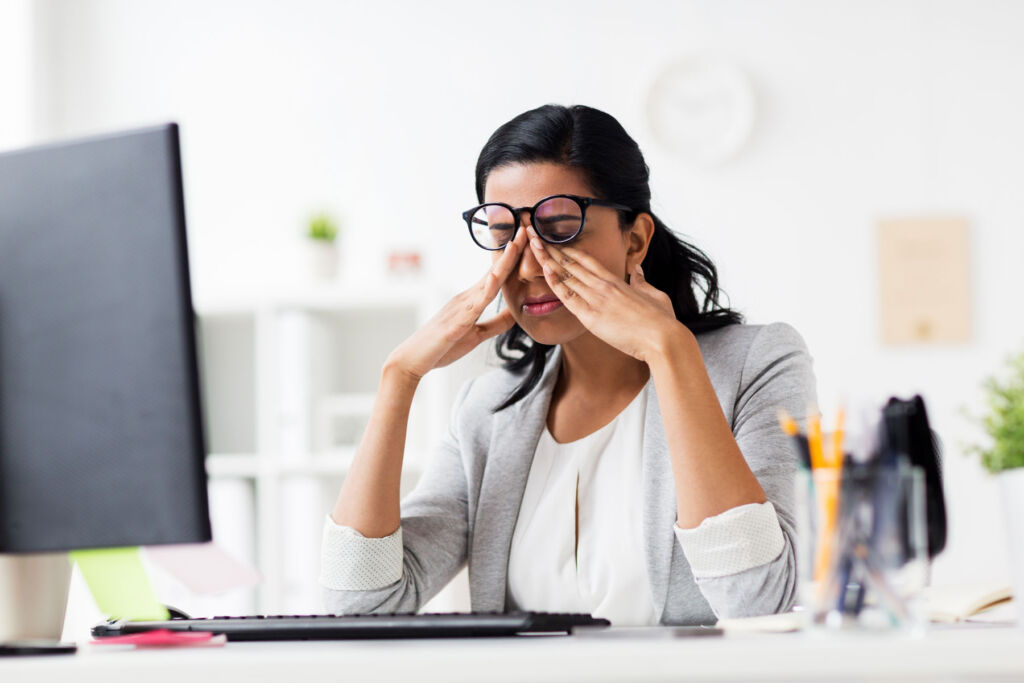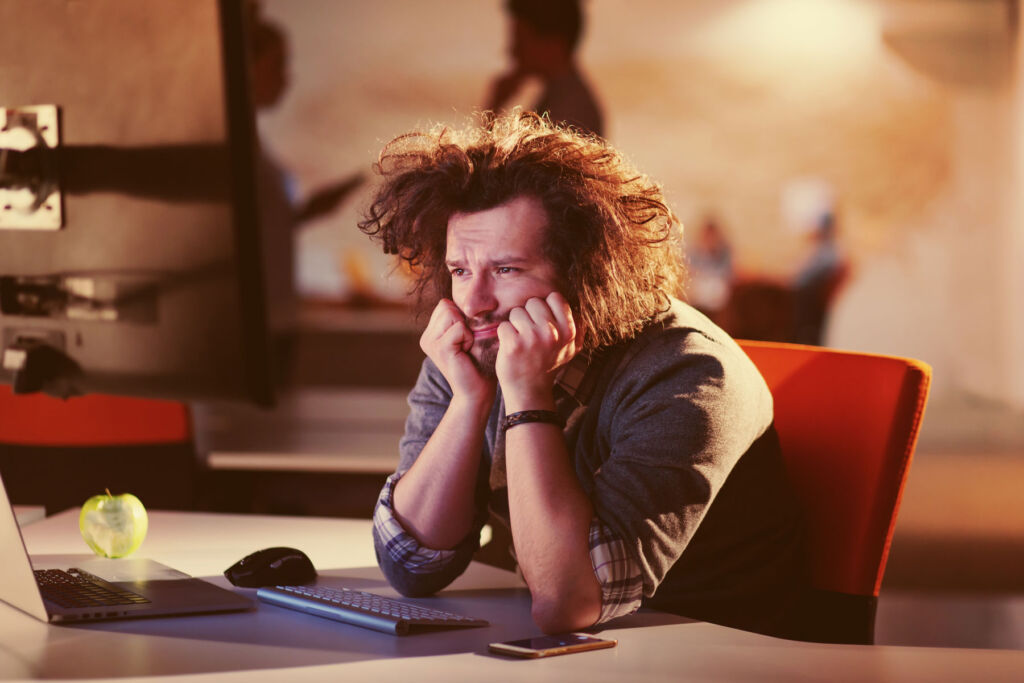
Dry eye syndrome, or to give its full medical name keratoconjunctivitis sicca, occurs when the eye does not produce enough tears, or they evaporate too quickly. The symptoms range from mild to continuous and can cause sight loss if left untreated. Shockingly, new real-world research[1] by Rohto Dry Aid found that one in two Brits could suffer from it.
Discovering that 50% of Brits could be victims of Dry Eye is shocking, but it is less surprising when considering the things that can cause it. Perhaps the most obvious cause is too much screen time; however, even everyday comforts such as heating and air-conditioning and physical changes such as menopause and even the weather can compound the condition. It’s obviously worrying that one in two Brits could be experiencing Dry Eye, but of equal concern is that 51% of people polled have no idea what it even is.
Optometrist Francesca Marchetti explains that Dry Eye is an increasing problem, yet there’s a real lack of knowledge surrounding the symptoms of this common eye condition. “Dry Eye happens when you don’t produce enough tears or the consistency of the tear changes. It leads to inadequate lubrication of the tear film with inflammation and likely damage to the eye surface.”
She added, “Watery, itchy, gritty, or dry eyes for no apparent reason are the most common symptoms of dry eye syndrome. In fact, almost four in 10 Brits sometimes suffer from itchy eyes.”
As the Rohto Dry Aid research discovered, when respondents understood the symptoms, only 26.6% of men and 17.3% of women admitted to never having suffered from Dry Eye.
Francesca admits that this potentially serious eye condition has other symptoms that the public must be aware of: “Tired eyes, blurred vision and sensitivity to light are just three other Dry Eye symptoms. Your eyes may also feel sore, irritated, burning or stinging.”
So what’s causing this potential sight saboteur?
Francesca Marchetti: “Dry Eye has many causes from age to the environment, including wind, cold, indoor air pollution and central heating, diet, certain medications and some health conditions.”

In fact, more than half of respondents in the Rohto Dry Aid survey often use a computer or laptop, with 47% experiencing headaches and 44% suffering from tired eyes.
Women’s health expert Dr Catherine Hood adds that menopause and perimenopause have a significant impact on Dry Eye. However, 76% of those questioned in the Rohto Dry Aid real-world research poll hadn’t heard that Dry Eye syndrome could be a part of perimenopause or menopause.
“Changes in hormones can lead to dysfunction of the tear glands as well as cause reduction in the oils and mucin that protect and lubricate the eye surface as part of the tear film,” adds Dr Hood.

Rohto Dry Aid’s real-world research poll also discovered that 48% of respondents find that cold weather causes Dry Eye, four in ten blame air pollution and a third find that air conditioning causes Dry Eye. On the flip side, central heating affects almost a third of those people polled, causing the most, Dry Eye distress for those aged over 60.
Healing Dry Eye
Whilst the facts on Dry Eye are plain to see, despite nearly half of Brits understanding that Dry Eye can damage their eyes, 65% don’t actually have an eye care routine, and less than a third use eye drops.
Francesca Marchetti explains, “it’s essential to hydrate, lubricate and protect the eyes to combat the decline in hyaluronic acid, a common trigger of Dry Eye.”
“Rohto Dry Aid eye drops are clinically proven and help create a refreshing feel. The Tearshield Technology™ formulation has been designed to provide the protection and hydration required to tackle dry spots and restore all layers of the natural tear film, which breaks the cycle of dry eye.”
The product provides a premium ‘8 in 1’ treatment for the dry eye condition, helping to relieve dryness, soreness, itchiness, irritation, burning, grittiness, stinging and tiredness. Great for all family members, including children over the age of six who frequently use a computer or digital screen; women who are menopausal or post-menopausal and men and women over 50, Rohto Dry Aid drops can hydrate, protect, and restore the natural tear film.
A staggering 97% of study triallists found that Rohto Dry Aid drops offered relief from Dry Eye symptoms in an impressive two minutes or less.
Here are ten eye care essential tips from Francesca Marchetti that she ‘swears by’:
20 20 20 love: Give your eyes a break from screens every 20 minutes by looking at a distant object (20ft away) for 20 seconds and blinking for 20 seconds – it’s called the 20 20 20 screen break rules (including usage of multiple digital devices).
Take eye breaks during long tasks: If you’re reading or doing another task that requires visual concentration, take periodic eye breaks. Close your eyes for a few minutes. Or repeatedly blink for a few seconds to help spread your tears evenly over your eyes.
Position your computer screen below eye level: If your computer screen is above eye level, you’ll open your eyes wider to view the screen. Position your computer screen below eye level so that you won’t open your eyes as wide. This may help slow the evaporation of your tears between eye blinks.
Use eye drops regularly: If you have Dry Eyes, use eyedrops even when your eyes feel fine to keep them well lubricated. Rohto Dry Aid provides relief for eight key symptoms of dry eye: dryness, soreness, itchiness, irritation, burning, grittiness, stinging and tiredness.

Healthy eating: Dry Eye involves inflammation, so eat an anti-inflammatory diet (e.g. fruit and vegetables, bean and pulses and grains rather than food high in fat, sugar, and salt.) Make sure to take a vitamin D supplement. Fish oil in the form of oily fish or a fish supplement is also important.
Avoid air blowing in your eyes: Don’t direct hair dryers, car heaters, air conditioners or fans toward your eyes.
Add moisture to the air: A humidifier can add moisture to dry indoor air in winter.
Consider wearing wraparound sunglasses or other protective eyewear: They can help block wind and dry air.
Be aware of your environment: The air at high altitudes, in desert areas and inside aeroplanes can be extremely dry. When spending time in such an environment, it may be helpful to frequently close your eyes for a few minutes at a time to minimise the evaporation of your tears.
Stop smoking and avoid smoke: Smoke can worsen Dry Eye symptoms.
Read more health guides, news and features here.
[1] Global Perspectus; 1,109 nationally representative consumers questioned; Autumn 2022.
![]()




You must be logged in to post a comment.